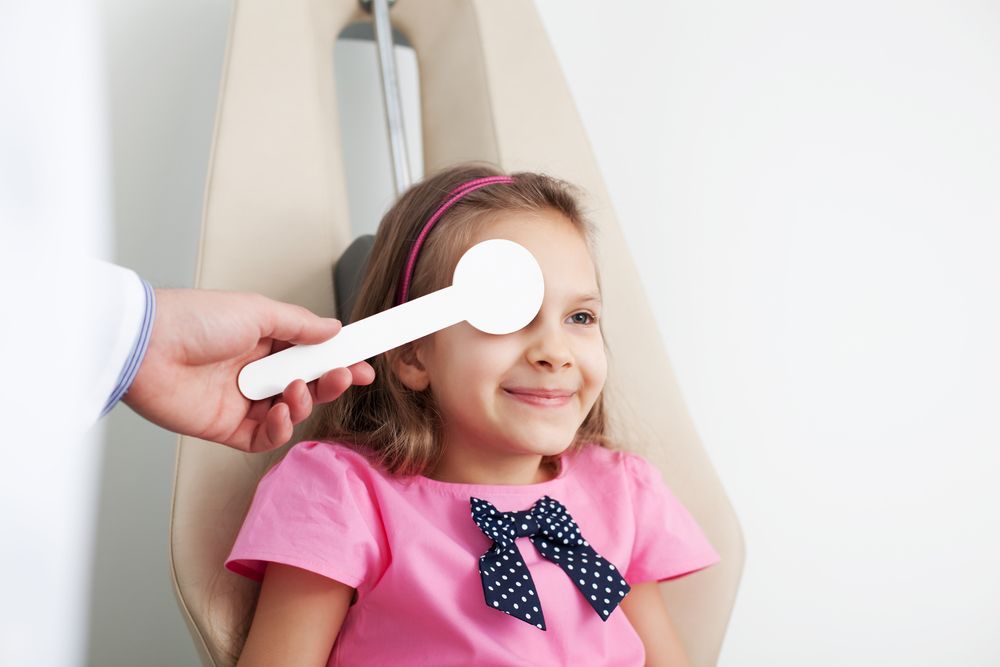Vision Problems in Children
 Vision problems can affect patients of all ages, which is why it’s so important to undergo regular eye checkups at an early age. Family eye care can lead to better vision from childhood to adulthood, as well as better preventative care for common eye health problems at various ages. Primary Eye Care Associates here in Chicago, IL is proud to help families with their diverse eye care needs.
Vision problems can affect patients of all ages, which is why it’s so important to undergo regular eye checkups at an early age. Family eye care can lead to better vision from childhood to adulthood, as well as better preventative care for common eye health problems at various ages. Primary Eye Care Associates here in Chicago, IL is proud to help families with their diverse eye care needs.
With this in mind, Dr. Steven Chander would like to consider some of the common vision problems that children face as they’re growing up. This should give you a good perspective of the health matters you should take seriously as a parent.
Refractive Errors
Refractive errors refer to the common issues with eyesight quality caused by the imperfect passage of light through the eyes. Refractive errors can lead to difficulty reading books and screens or seeing objects on written on a board or down the street. You know refractive errors better by the following terms:
- Nearsightedness (Myopia)
- Farsightedness (Hyperopia)
- Astigmatism
To treat refractive errors, glasses and other kinds of corrective lenses are the best option. Laser eye surgery can be considered when a child with a refractive error becomes an adult.
Conjunctivitis: Pink Eye
The scourge of babysitters and K-6 classrooms, the eye infection known as pink eye can spread rapidly. The condition is usually caused when bacteria makes contact with the conjunctiva, which is the thin, clear tissue covering the white part of the eye. This leads to the eyes becoming swollen, pink, and itchy. Viruses and allergens can also cause different forms of pink eye to occur.
The best treatment for pink eye typically involves proper washing of hands, keeping conditions sanitary, wiping off surfaces where bacteria remains, and keeping the eyes clean. Antibiotics may be prescribed if necessary.
Strabismus: Misaligned Eyes
When a child has eyes that seem to be improperly aligned with one another, that condition is known as strabismus. The condition affects 4 percent of the American population, causing people to have crossed eyes or an eye that seems out of sync with the other. Though colloquially described as “lazy eye,” lazy eye is actually another condition entirely. (More on that in a second.)
To treat strabismus, eye doctors have many options. Corrective lenses can help to some degree, as can certain kinds of eye exercises. If needed, surgery can be performed to help ensure the eyes are better aligned.
Amblyopia: Lazy Eye
When a person suffers from lazy eye, this means that one of their eyes has reduced vision. This is typically because one eye is not as strong as the other eye, and the brain has problems making both eyes focus together properly.
There are three types of amblyopia:
- Strabismic Lazy Eye - Related to strabismus
- Refractive Lazy Eye - Related to refractive error
- Deprivational Lazy Eye - Vision development deprived earlier in life
Lazy eye is usually treated without surgery. Children wear a patch over the stronger eye so they can build greater strength in the weaker eye. Eventually the two eyes will be able to work together.
Hordeolum: Styes
When the glands along the eyelids become clogged or irritated, it can cause a small pink or red bump to form. This is known as a stye, and it can be quite uncomfortable. They are similar to pimples in some ways.
If you develop a stye, it will eventually go away on its own. Doctors recommended keeping the eyelids clean, washing your face, and applying a damp washcloth with warm water to the affected eyelid.
Blepharitis: Inflammation of the Eyelids
Blepharitis is a type of inflammation that affects a person’s entire eyelid, generally forming along the eyelash area. Blepharitis leaves your eyelids looking red, puffy, and irritated. The condition can contribute to the formation of styes.
The best treatment for blepharitis tends to involve medication to get the infection under control. If there is an underlying health issues that contributes to blepharitis, treating that will be a key to promoting wellness.
Learn More About Children’s Eye Care
For more information about vision problems affecting children and how they can be address, be sure to contact an experienced eye care and vision correction specialist. The team at Primary Eye Care Associates is here to help. You can reach our office by phone at (773) 492-6041.


